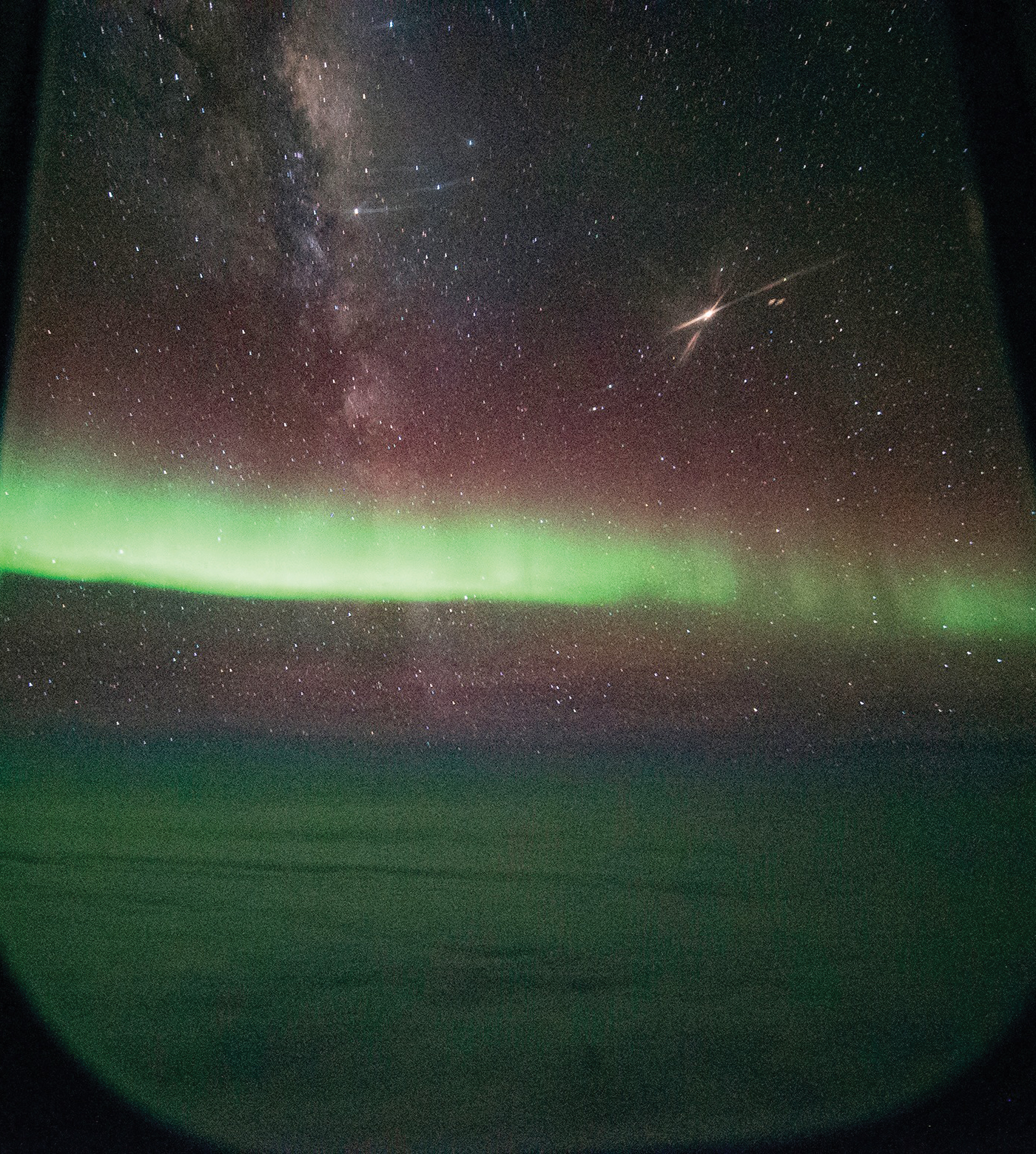
The Stratospheric Observatory for Infrared Astronomy, a joint project of NASA and the German Aerospace Center, DLR, has been used extensively to look many objects in the universe, from black holes to galaxies and even the Moon.
A decade ago, German researcher Heinz Hübers led a team to improve one of SOFIA’s infrared instruments – the German Receiver for Astronomy at Terahertz Frequencies, or GREAT – with a new laser technology. He realized that the upgrade would not only help to study the distant cosmos, it could also be used much closer to home.
“SOFIA looks right through the Earth’s upper atmosphere as it observes the universe beyond, and I thought it would be fascinating to someday collect data from the GREAT instrument that could benefit studies of our own atmosphere,” said Hübers, director of DLR’s Institute of Optical Sensor Systems and professor at Humboldt University in Berlin. “This is certainly not what you think of using SOFIA’s instruments for, but I tucked away the idea until I had an opportunity to test it out.”
Now, Hübers has proven it could be done. He recently published a paper with GREAT data that for the first time directly measured oxygen in one of the least understood regions of Earth’s upper atmosphere, the mesosphere and lower thermosphere.
The SOFIA results more completely confirm what theory, direct, and indirect measurements had predicted about the concentration of oxygen in this atmospheric region. This further solidifies some of the basic science around how solar energy is exchanged between the surface and space. The results were published in Nature Communications Earth and Environment.
SOFIA observed a particular form of unbonded oxygen, known as atomic oxygen, which is distinct from the life-giving O2 found at the Earth’s surface. Atomic oxygen plays an important role in cooling the upper atmosphere and therefore is used to estimate temperatures in this region. Climate models predict that increasing greenhouse gases will raise temperatures in the lower atmosphere yet decrease temperatures in the mesosphere. A more accurate monitoring of the mesosphere’s temperature can help researchers better understand the relationship between the lower and upper atmosphere. SOFIA’s direct measurements improve these temperature estimates.
Beginning at about 30 miles up, the mesosphere and thermosphere have been difficult to study. Ground-based telescopes are hampered by the distortion of water vapor in the lower atmosphere. High-flying satellites rely on other substances to infer levels of oxygen but could not make direct measurements. Instruments that flew on rockets and even on the Space Shuttle in the 1990s offered a brief snapshot of these regions.
Flying at about 40,000 feet (or 7 miles high), SOFIA, which utilizes a Boeing 747SP, soars above 99.9% of the water vapor in the atmosphere and is big enough to carry the infrared instruments needed to directly measure oxygen.
More Than “Noise”
A trove of Earth’s atmospheric data from many seasons and locations already exists in SOFIA’s raw data archive. Yet, astronomers, interested in the stars, have always treated the atmospheric data as background “noise” and filtered it out from the sought-after celestial data. While Hübers saw that the atmospheric data could itself be valuable, it took several years to develop the right tools and processes to calibrate and analyze it.
“Given our previous successes, and the strong signal from Earth, it made sense to create the tools necessary to analyze atomic oxygen in the Earth’s atmosphere,” said Hübers. “Though the atmospheric data is really a byproduct of our astronomical observations, we are very pleased to see that SOFIA can contribute to better understanding our home planet.”
The work may prove valuable. This particular result came from data collected in 2015 during a SOFIA science flight that took off from Palmdale, California. As the aircraft headed up the coast toward Canada, it pointed the telescope toward the globular-shaped Jellyfish nebula, 5,000 light years away, collecting the Earth’s atmospheric data in the process.
More insights into Earth’s atmosphere are to come. Measurements taken during SOFIA’s observations from New Zealand, in the Southern Hemisphere’s winter months, and during recent flights from Cologne, Germany, will provide information about how this region of the atmosphere changes across seasons and locations.
SOFIA is a joint project of NASA and the German Aerospace Center. NASA’s Ames Research Center in California’s Silicon Valley manages the SOFIA program, science, and mission operations in cooperation with the Universities Space Research Association, headquartered in Columbia, Maryland, and the German SOFIA Institute at the University of Stuttgart. The aircraft is maintained and operated by NASA’s Armstrong Flight Research Center Building 703, in Palmdale, California.



























